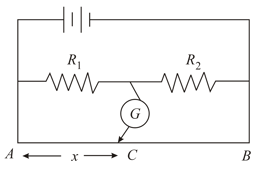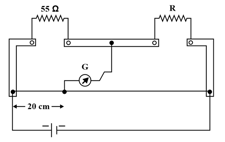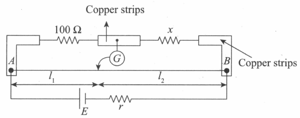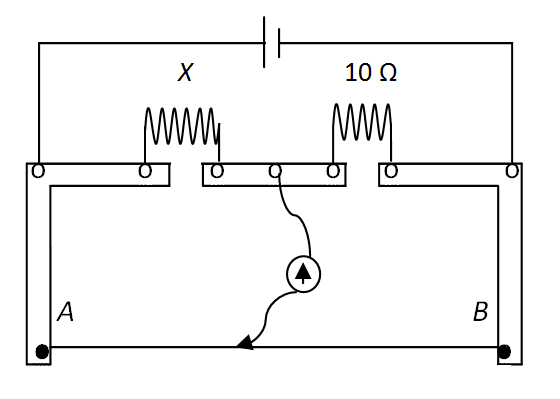Meter Bridge
Important Questions on Meter Bridge
In the shown arrangement of the experiment of the metre bridge if corresponding to null deflection of galvanometer is x, what would be its value if the radius of the wire is doubled?

In the given figure, the galvanometer shows no deflection. What is the value of ?

The length of the potentiometer wire is and resistance is .
In a practical Wheatstone bridge circuit as shown, when one more resistance of is connected in parallel with an unknown resistance , then, the ratio becomes . If is the balance length and is a uniform wire, then the value of must be

In a metre bridge experiment, null point is obtained at from one end of the wire when resistance is balanced against another resistance . If , then there will be the new position of the null point from the same end, if one decides to balance a resistance of against
A wire connected in the left gap of a meter bridge balance a resistance in the right gap at a point, which divides the bridge wire in ratio . If the length of the wire is , the length of one ohm wire is
A resistance of is connected across one gap of a meter bridge ( the length of the wire is ) and an unknown resistance, greater than , is connected across the other gap. When the resistances are interchanged, the balance point shifts by 20 cm. Neglecting any corrections, the unknown resistance is
A meter bridge is set-up as shown in figure, to determine an unknown resistance X using a standard 10 resistor. The galvanometer shows null point when tapping-key is at 52 cm mark. The end-corrections are 1 cm and 2 cm respectively for the ends A and B. The determined value of X is


